Introduction to Crate Training
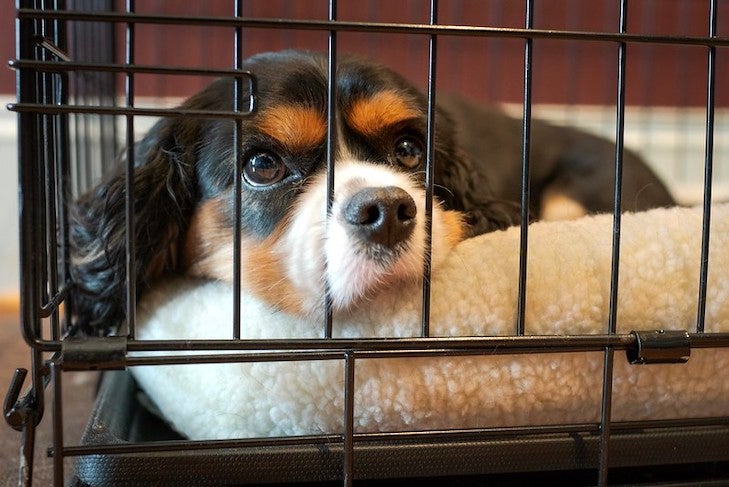
Crate training is a valuable tool when it comes to providing your dog with a safe space of their own. It involves teaching your dog to view their crate as a comfortable and secure area where they can relax and rest. This method has numerous benefits for both you and your furry friend.
When properly introduced, crate training can help with house training, preventing destructive behaviors, reducing anxiety, and facilitating transportation or visits to the veterinarian. It also gives you peace of mind knowing that your dog is safe when you're unable to supervise them.
By creating a positive association with the crate and following a structured training approach, you can ensure that your dog views their crate as a cozy sanctuary rather than a form of punishment.
Benefits of crate training for dogs
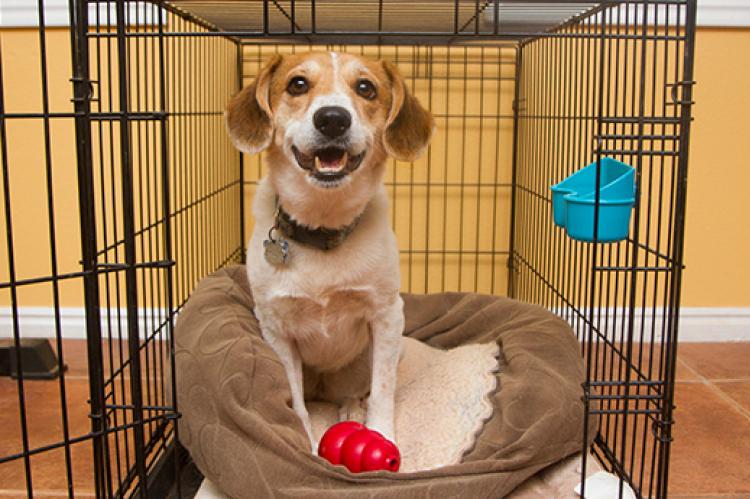
Crate training offers numerous benefits to dogs of all ages and breeds. First and foremost, it provides them with a safe and secure space of their own. Dogs are den animals by nature, and a crate mimics the cozy, enclosed environment they instinctively seek. This can help alleviate stress, anxiety, and fear that may arise when left alone or in unfamiliar surroundings.
Additionally, crate training aids in housebreaking your dog. By confining them to their crate when unsupervised, you prevent accidents inside the house and help establish a consistent routine for toileting. It also aids in preventing destructive behavior by limiting access to household items when you can't keep an eye on them.
Furthermore, crates are valuable tools for traveling with your dog. Whether it's a short trip to the vet or a long journey, having your dog comfortable and secure in their crate ensures their safety and reduces anxiety during transportation.
In summary, crate training provides dogs with a safe haven, aids in housebreaking, prevents destructive behavior, and facilitates travel. With proper training and positive associations with the crate, it can become an essential tool in providing comfort and security for your beloved furry friend.
Importance of creating a safe space for your dog

Creating a safe space for your dog is crucial for their overall well-being and comfort. Dogs, like humans, need a place where they can feel secure and relaxed. By providing a designated area for your dog, such as a crate, you are giving them a safe haven they can retreat to when they need it.
Having a safe space can help reduce stress and anxiety in dogs, especially during times of loud noises or unfamiliar situations. It also helps with house training and prevents destructive behavior. A safe space allows your dog to have their own territory within your home, establishing boundaries and giving them a sense of security.
Furthermore, creating a safe space promotes good behavior and helps in establishing routines. It becomes their personal sanctuary where they can rest, sleep, or simply have some alone time. By providing this safe haven for your furry friend, you are ensuring their emotional well-being and overall happiness.
Choosing the Right Crate
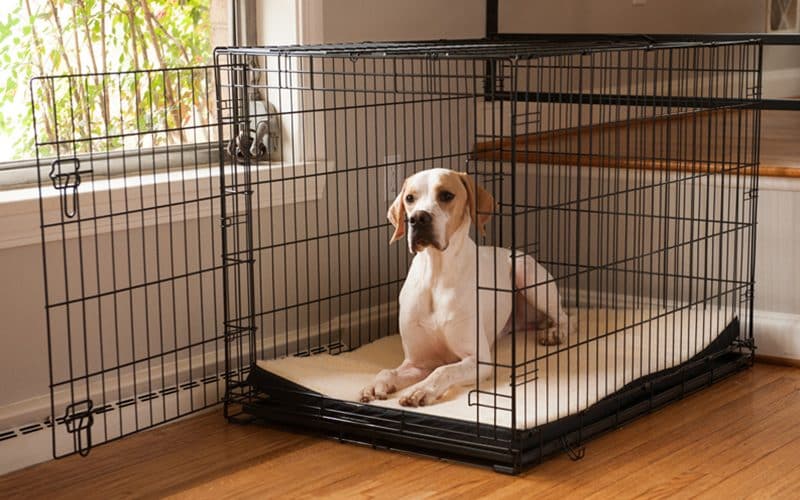
When choosing a crate for your dog, there are several factors to consider to ensure you select the right one. Firstly, size is crucial. The crate should be large enough for your dog to stand up, turn around, and lie down comfortably. However, it shouldn't be too big either, as dogs prefer cozier spaces that mimic dens.
Next, consider the material of the crate. Wire crates allow for better airflow and visibility, making them ideal for dogs who may feel confined in closed spaces. Plastic crates provide a more den-like atmosphere and can help create a sense of security for your dog. Soft-sided crates are lightweight and portable but may not be suitable for dogs who tend to scratch or chew.
Ultimately, choosing the right crate will depend on your dog's needs and preferences—selecting the appropriate size and type will contribute to their overall comfort and happiness during crate training.
Factors to consider when selecting a crate
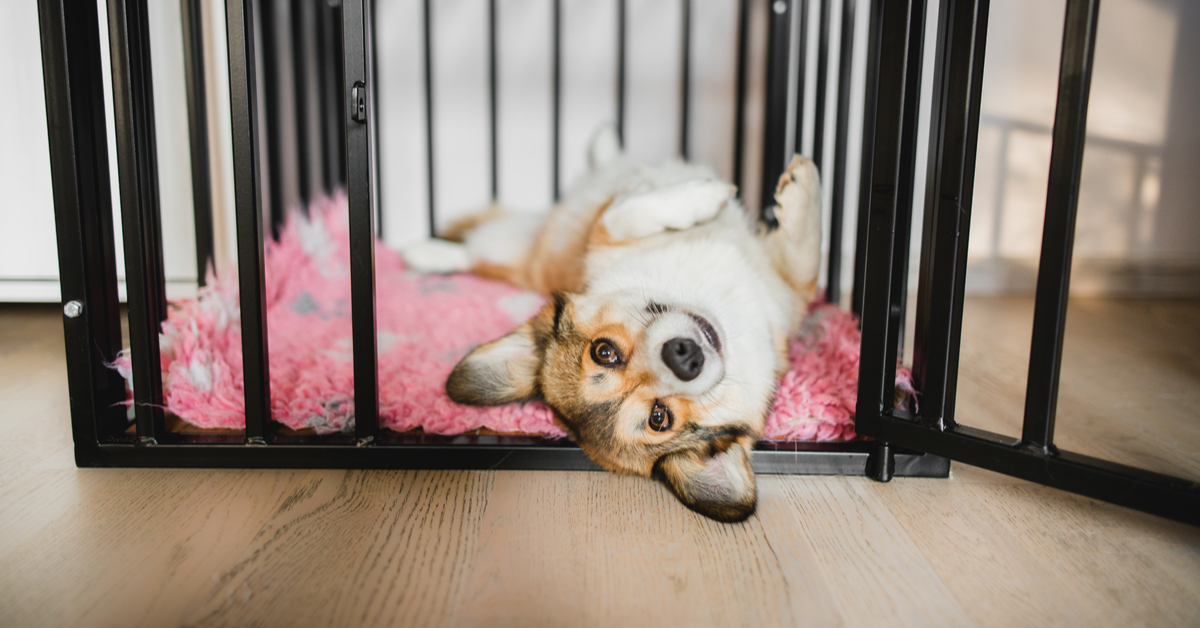
When selecting a crate for your dog, there are several factors to consider in order to ensure their comfort and safety. First and foremost, size is crucial. The crate should be large enough for your dog to stand up, turn around, and lay down comfortably. If the crate is too big, your dog may not feel secure. Conversely, if the crate is too small, it can be uncomfortable and restrict movement.
Durability is another important factor. Look for crates made from sturdy materials that can withstand your dog's chewing or scratching. Additionally, consider the ease of cleaning and maintenance when choosing a crate.
Lastly, take into account your dog's personality and specific needs. Some dogs may do better in an enclosed plastic crate while others prefer the openness of a wire crate. By considering these factors, you can select the best crate for your furry friend's needs.
Types of crates available: wire, plastic, and soft-sided
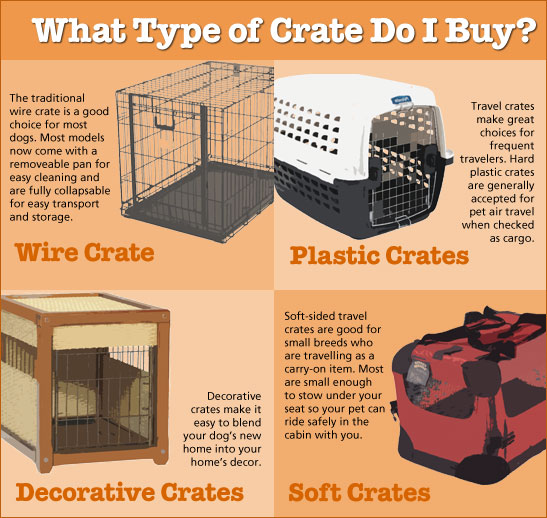
When it comes to crate training your dog, selecting the right crate is crucial. There are different types of crates available in the market, including wire crates, plastic crates, and soft-sided crates.
Wire crates are popular due to their durability and ventilation. They provide maximum airflow and visibility for your dog. Plastic crates are sturdy and secure, making them a good choice for travel. They also offer more privacy and can create a den-like environment for your dog. Soft-sided crates are lightweight and portable, making them suitable for outdoor activities or trips.
Consider factors such as your dog's size, temperament, and purpose of use when choosing a crate. Additionally, make sure the crate is spacious enough for your dog to stand up, turn around, and lay down comfortably.
Crate Set-up and Preparation
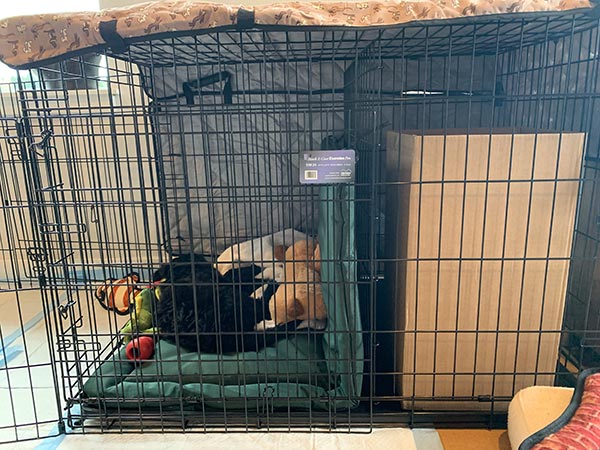
To set up the crate and prepare it for your dog, you'll need to consider a few important factors. First, it's essential to choose the right crate size for your dog. The crate should be large enough for your dog to stand, turn around, and lie down comfortably. It shouldn't be too small or too large, as this may affect their feeling of security.
Next, creating a comfortable environment inside the crate is crucial. Provide soft bedding such as blankets or a dog bed to make it cozy. You can also add some chew toys or interactive feeders to keep your dog entertained during crate time.
It's important to introduce your dog to the crate gradually and make it a positive experience for them. Start with short periods of time in the crate and gradually increase the duration as they become more comfortable. Always use positive reinforcement and rewards when they enter or stay in the crate.
By following these guidelines, you can ensure that your dog has a safe and comfortable space in their crate.
Proper crate size for your dog

When it comes to crate training your dog, ensuring that you choose the proper crate size is essential. Your dog should have enough space to stand up, turn around, and lie down comfortably. However, the crate shouldn't be too large either, as this may encourage them to use one corner as a bathroom.
To determine the right size, measure your dog from the tip of their nose to the base of their tail and add a few inches for comfort. The height of the crate should allow them to stand without their head touching the top. It's always better to opt for a larger crate if you have a puppy that will grow into it, but make sure to block off excess space until they reach their full size.
Providing a properly sized crate will help create a safe and cozy space for your dog during training and ensure their comfort throughout the process.
Creating a comfortable environment: bedding and accessories
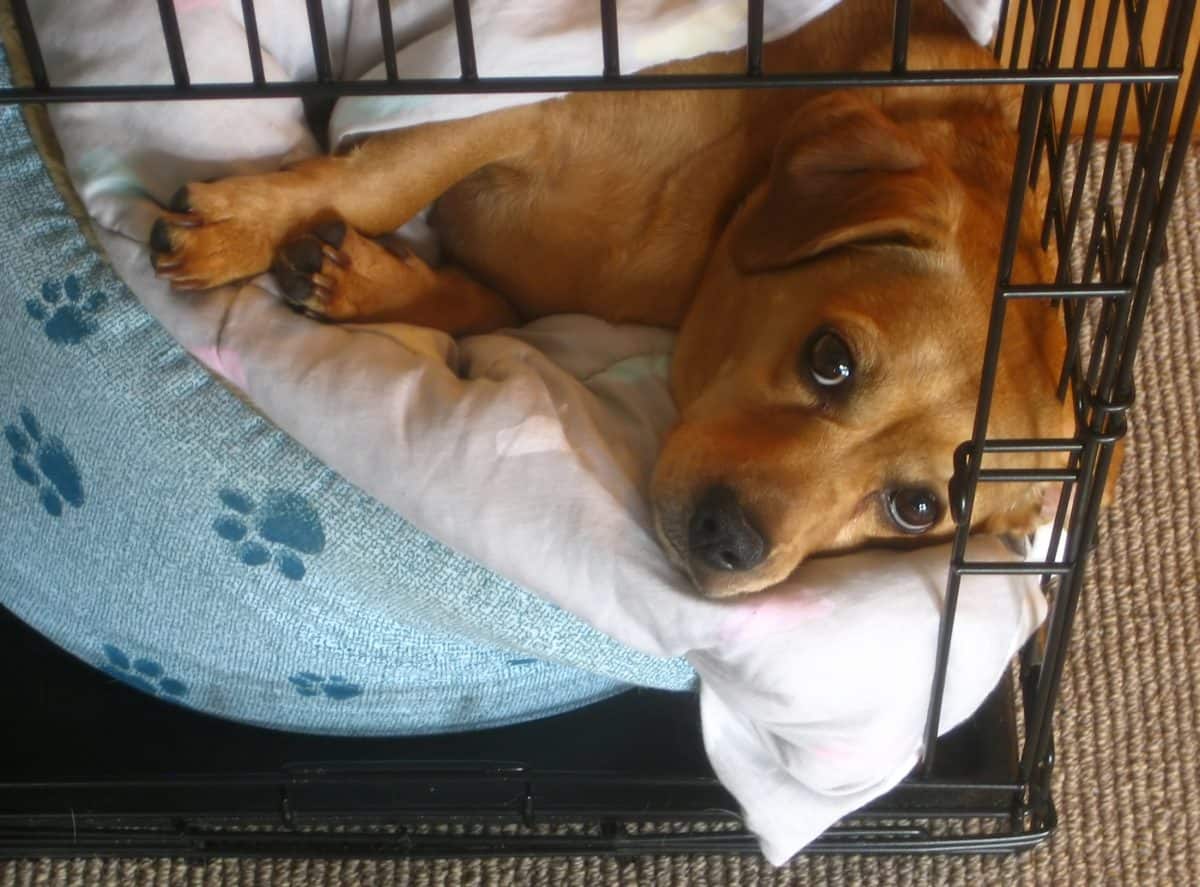
To create a comfortable environment for your dog in their crate, you'll need to consider the bedding and accessories you provide. The goal is to make the crate a cozy and inviting space where your furry friend feels safe and secure.
When it comes to bedding, opt for a comfortable and washable material. Soft blankets or dog beds with removable covers are ideal choices. Avoid using materials that can be torn apart easily or pose a choking hazard.
Accessories such as chew toys or puzzle toys can also help keep your dog entertained while inside the crate. These can provide mental stimulation and prevent boredom during crate time.
Remember to regularly clean the bedding and toys to maintain hygiene and freshness. Additionally, ensure that any accessories you choose are safe and suitable for your dog's size and breed.
By creating a comfortable environment with appropriate bedding and accessories, you're ensuring that your dog has a pleasant experience in their crate.
Introducing Your Dog to the Crate
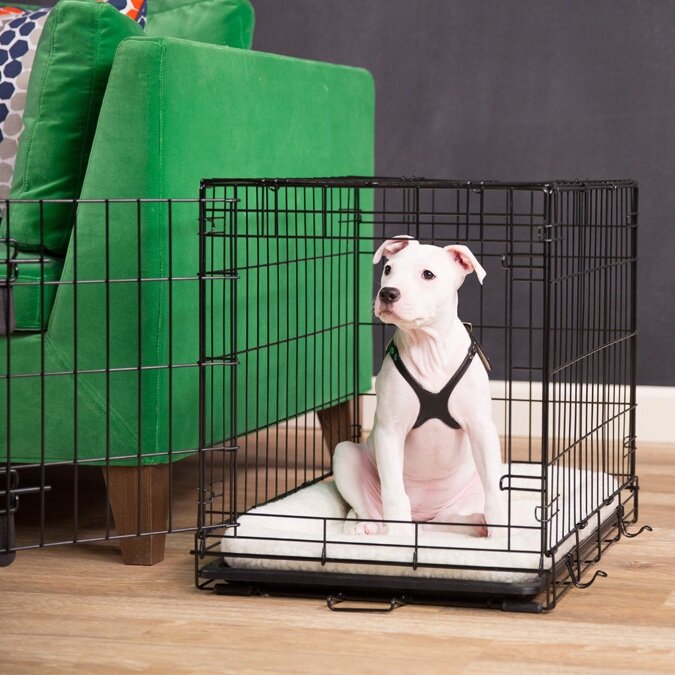
To introduce your dog to the crate, start by making it a positive and inviting space. Place treats, toys, or familiar items inside the crate to attract your dog's attention. You can also feed your dog their meals near the crate, gradually moving the food inside the crate over time.
Ensure that the door of the crate is open and secure so that your dog feels comfortable entering and exiting freely. Encourage your dog to explore the crate at their own pace, using gentle verbal cues or luring with treats if needed.
Avoid forcing or pushing your dog into the crate as this may create negative associations. Instead, focus on making the crate an appealing and safe place for them to voluntarily enter. With patience and positive reinforcement, your dog will begin to view the crate as their own cozy den.
Tips for making the crate a positive experience
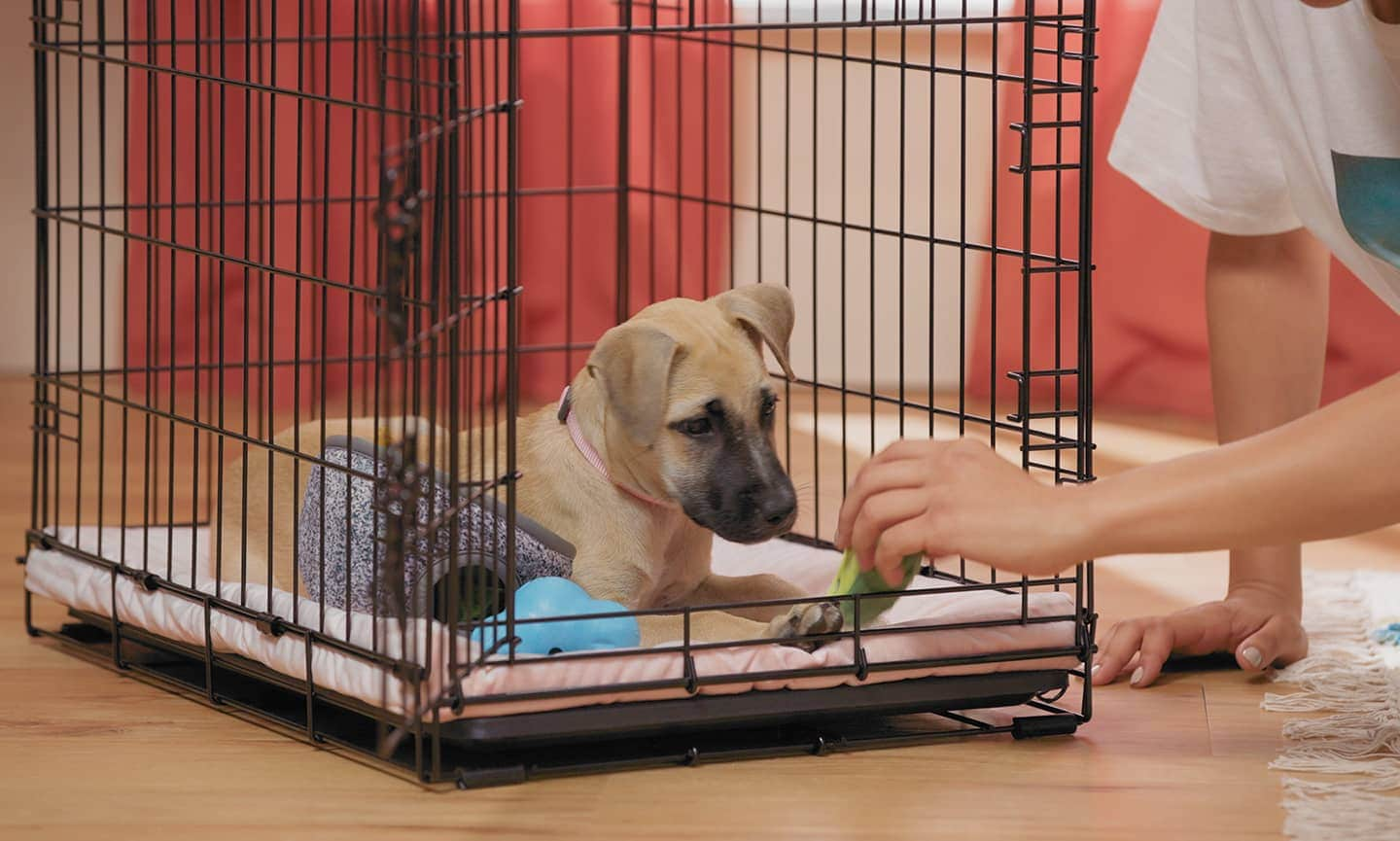
To make the crate a positive experience for your dog, there are several tips that you can follow. First and foremost, always associate the crate with positive things, such as treats or toys. Make the crate a comfortable and cozy space by adding soft bedding and blankets. Leave the crate door open when you're at home so that your dog can go in and out freely. Gradually increase the amount of time your dog spends in the crate, starting with short periods and gradually extending them. Use verbal praise or rewards to reinforce good behavior when your dog is in the crate. Lastly, never use the crate as a form of punishment as this will only create negative associations.
Gradual introduction and initial crate training exercises

To gradually introduce your dog to the crate, start by placing it in an area where your dog can visibly see and approach it. Keep the door open and entice your dog to investigate it with treats or toys. Allow your dog to enter the crate voluntarily, without any force or pressure. Once inside, praise and reward them with treats or verbal praise.
Next, slowly start closing the crate door for short periods while your dog is inside, gradually increasing the duration over time. This will help your dog become comfortable with being confined in the crate. It is important to remain calm and patient during this process, as any signs of stress or anxiety from you could be picked up by your dog.
Additionally, practice leaving the room for short intervals of time while your dog remains in the crate. This will help them get used to you being out of their sight without causing distress.
Remember, gradual progress is key when introducing a new training exercise like crate training. Be consistent in providing positive reinforcement and take it slow to ensure a safe and positive experience for your furry friend.
Establishing a Routine
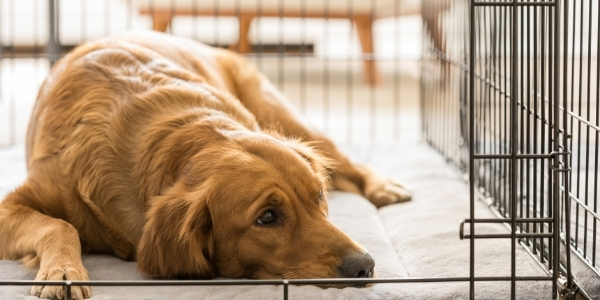
Setting a consistent schedule for crate time is crucial in crate training your dog. Dogs thrive on routine and structure, so having a predictable schedule will help them feel secure and relaxed in their crate.
Start by establishing specific times for crate time, such as during meal times or when you need to leave the house. Consistency is key, so try to stick to the same schedule every day.
Additionally, using the crate for meal times and nap times can help your dog associate it with positive experiences. This will make them more comfortable and willing to spend time in their crate.
By establishing a routine, you are creating a sense of stability for your dog, which will contribute to the success of their crate training.
Setting a consistent schedule for crate time
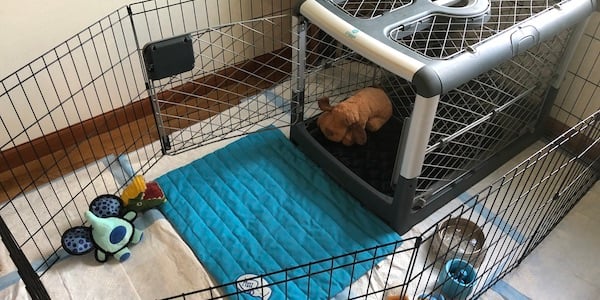
Setting a consistent schedule for crate time can greatly benefit your dog's training progress. Dogs thrive on routine and having a structured schedule helps them feel secure. Start by determining the appropriate amount of time your dog should spend in the crate based on their age and needs. Puppies may need more frequent breaks while adult dogs can usually tolerate longer periods of crate time.
Establish specific times for crate sessions, such as when you leave the house or during meal times. Consistency is key, so stick to the same schedule every day. This will help your dog understand when it's time to enter the crate and when they can expect to be let out.
By following a consistent schedule, you'll create a sense of predictability for your dog, making crate training more effective and providing them with a safe and secure space.
Using crate for meal times and nap times

During crate training, it is important to utilize the crate for meal times and nap times as well. This helps in creating a positive association with the crate and establishes it as a safe and comfortable space for your dog.
When it comes to meal times, place your dog's food bowl inside the crate. This encourages them to enter willingly and associate the crate with something enjoyable like eating. Be sure to leave the door open initially to avoid any negative associations.
For nap times, provide a cozy bed or soft blanket inside the crate. This gives your dog a comfortable space to relax and rest. By consistently using the crate for meals and naps, your dog will learn to appreciate their crate as their own special retreat.
Crate Training Techniques

Positive reinforcement is a key component of successful crate training. When introducing your dog to the crate, use treats or toys to create a positive association with the space. Reward your dog when they enter the crate voluntarily or go inside when prompted. Gradually increase the duration of time spent in the crate, ensuring that your dog remains calm and comfortable throughout.
Another effective technique is to provide mental stimulation while your dog is in the crate. Use puzzle toys or chew bones to keep them occupied and prevent boredom or anxiety.
Remember to never use the crate as a form of punishment. It should always be seen as a safe and positive space for your dog. Consistency and patience are crucial in successfully implementing crate training techniques.
Positive reinforcement and rewards
Positive reinforcement and rewards are essential elements of crate training. Dogs respond well to positive reinforcement, which involves rewarding desired behaviors to encourage repetition. When introducing your dog to the crate, use treats or special toys as rewards when they voluntarily enter or stay inside the crate. This will create a positive association with the crate and help them feel more comfortable in it.
Additionally, praise and petting can also serve as rewards for good behavior during crate training sessions. Make sure to provide verbal encouragement and affection whenever your dog displays calm and relaxed behavior inside the crate.
It's important to note that rewards should be given immediately after the desired behavior occurs, so your dog can associate the reward with their actions. By using positive reinforcement techniques consistently, you can make your dog view the crate as a positive and inviting space.
Gradual increase in crate time duration

To ensure that your dog becomes comfortable spending extended periods of time in their crate, it is crucial to gradually increase the duration of their crate confinement. Start by keeping your dog in the crate for short intervals, such as five to ten minutes, and gradually work your way up to longer periods of time.
During the initial stages, make sure to provide plenty of treats and praise whenever your dog enters and stays in the crate without any signs of anxiety or distress. Slowly increase the time spent in the crate by a few minutes each day, observing your dog's behavior for any signs of discomfort or restlessness.
Remember, it is important not to rush this process as forcing your dog to spend too much time in the crate too soon can lead to anxiety and stress. By gradually increasing crate time duration, you are helping your dog develop a positive association with their safe space and ensuring a peaceful transition when it comes to unsupervised crate time.
Troubleshooting Common Issues
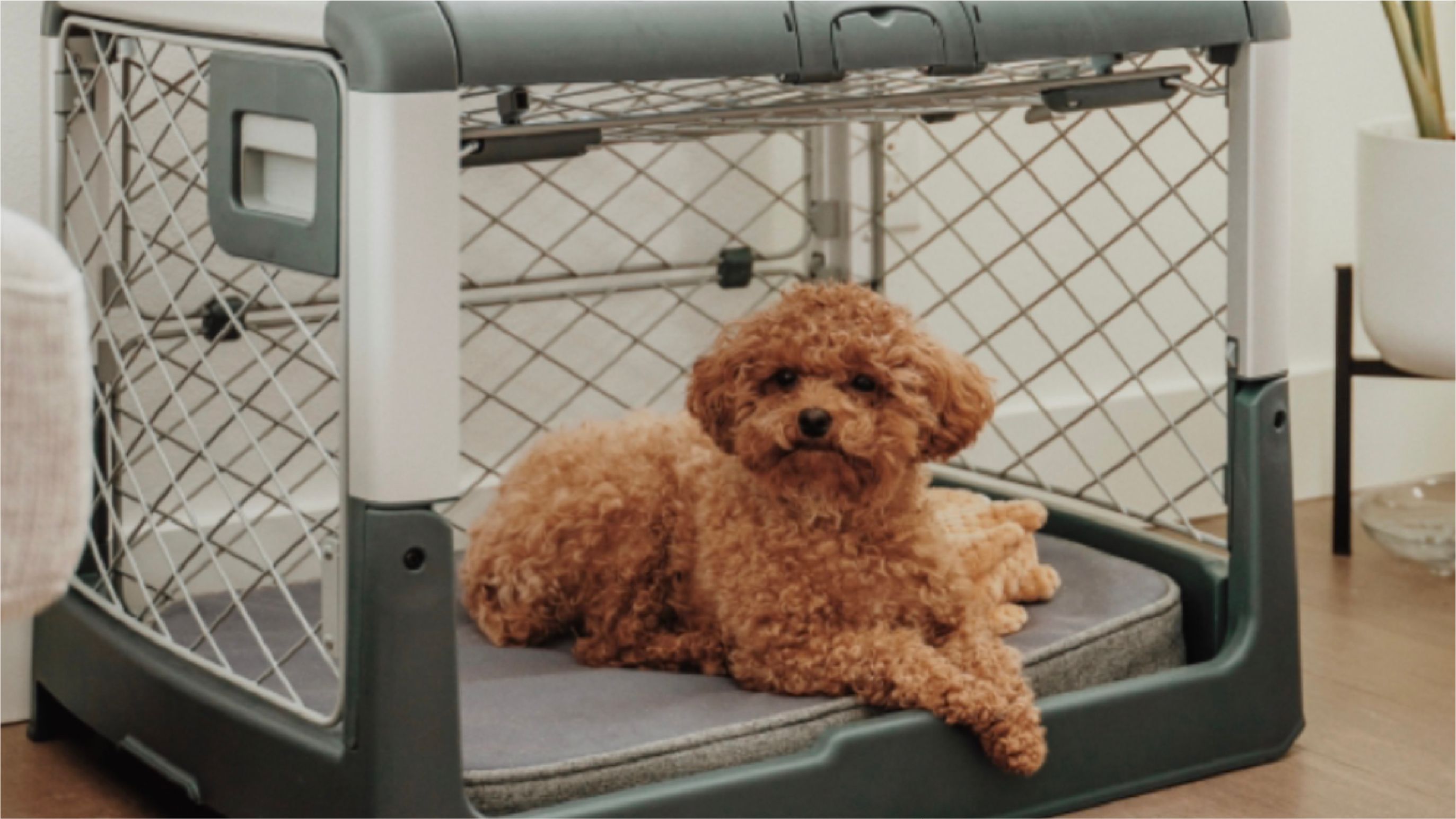
Dealing with separation anxiety and whining: If your dog exhibits signs of separation anxiety when in the crate, such as excessive whining or barking, it is important to address this issue. Gradual desensitization is key in overcoming separation anxiety. Start by leaving your dog in the crate for short periods of time while you are still at home. Gradually increase the duration of time spent in the crate, rewarding and praising your dog for calm behavior. Additionally, providing comforting items like a favorite toy or a shirt with your scent can help ease anxiety.
Addressing crate aversion or fear: Some dogs may initially show fear or aversion towards the crate. To help your dog overcome this, put treats or toys near the crate entrance to encourage positive associations. Slowly move these items further into the crate over time until your dog willingly enters. Avoid forcing your dog into the crate as it may escalate their fear. Patience and consistency are key in helping your dog overcome their aversion to the crate.
By troubleshooting common issues like separation anxiety and aversion/fear, you can ensure that the overall crate training experience remains positive for both you and your furry friend.
Dealing with separation anxiety and whining

Dealing with separation anxiety and whining:
Separation anxiety and whining can be common challenges when crate training a dog. To address this issue, it's essential to gradually acclimate your dog to being alone in the crate. Start by leaving your dog in the crate for short periods of time while you are in another room, gradually increasing the duration as they become more comfortable.
To alleviate separation anxiety, try providing a special toy or treat that is only given when they are in the crate. This can help create a positive association with the crate and distract them from any anxiety they may be feeling.
If your dog whines or cries while in the crate, it's important not to immediately let them out. This can reinforce the behavior and make it more difficult for them to adjust. Instead, wait for a break in their vocalization before letting them out, and praise them for being quiet.
Consistency and patience are key when dealing with separation anxiety and whining. With time and positive reinforcement, your dog will learn to feel secure and comfortable in their crate.
Addressing crate aversion or fear
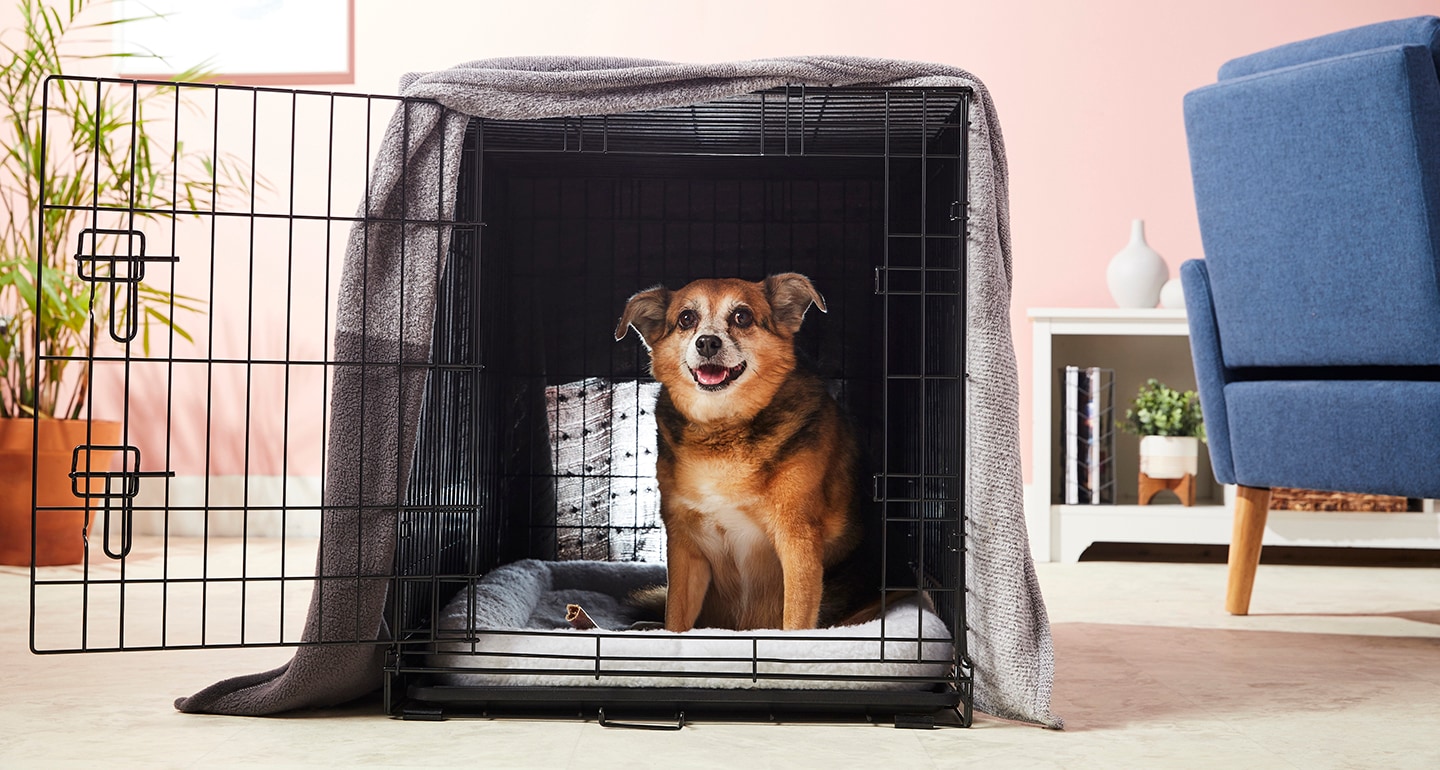
Addressing crate aversion or fear can be a common challenge when crate training your dog. It's important to approach this issue with patience and sensitivity.
One way to tackle crate aversion or fear is by gradually acclimating your dog to the crate. Start by placing treats or toys near the crate, then inside the open door, and eventually inside the closed crate. This helps your dog associate positive experiences with the crate.
If your dog shows signs of anxiety or fear, such as panting or pacing, it's essential not to force them into the crate. Instead, take a step back and focus on building positive associations through gradual exposure.
Additionally, you can try using calming aids such as pheromone sprays or calming music to help create a more relaxed environment for your dog. Seeking professional guidance from a certified trainer or behaviorist may also be beneficial in addressing any deep-rooted fears or anxieties that your dog may have.
Gradual Transition to Unsupervised Crate Time

Monitoring your dog's progress and behavior is crucial during the gradual transition to unsupervised crate time. It’s important to observe how your dog reacts to being alone in the crate and whether they display any signs of distress or anxiety. Start by leaving them alone for short periods, gradually increasing the duration as they become more comfortable.
During this transition phase, it’s essential to maintain a positive association with the crate. Continue using rewards and positive reinforcement when your dog enters or stays in the crate. If your dog demonstrates good behavior and remains calm during crate time, you can gradually increase their freedom by allowing them to roam a designated area while still having access to their crate.
Remember to be patient and understanding throughout this process. Each dog is unique, and they may require different amounts of time before they can be left unsupervised in the crate. By monitoring their progress closely and gradually increasing their freedom, you can ensure a successful transition to unsupervised crate time.
Monitoring your dog's progress and behavior
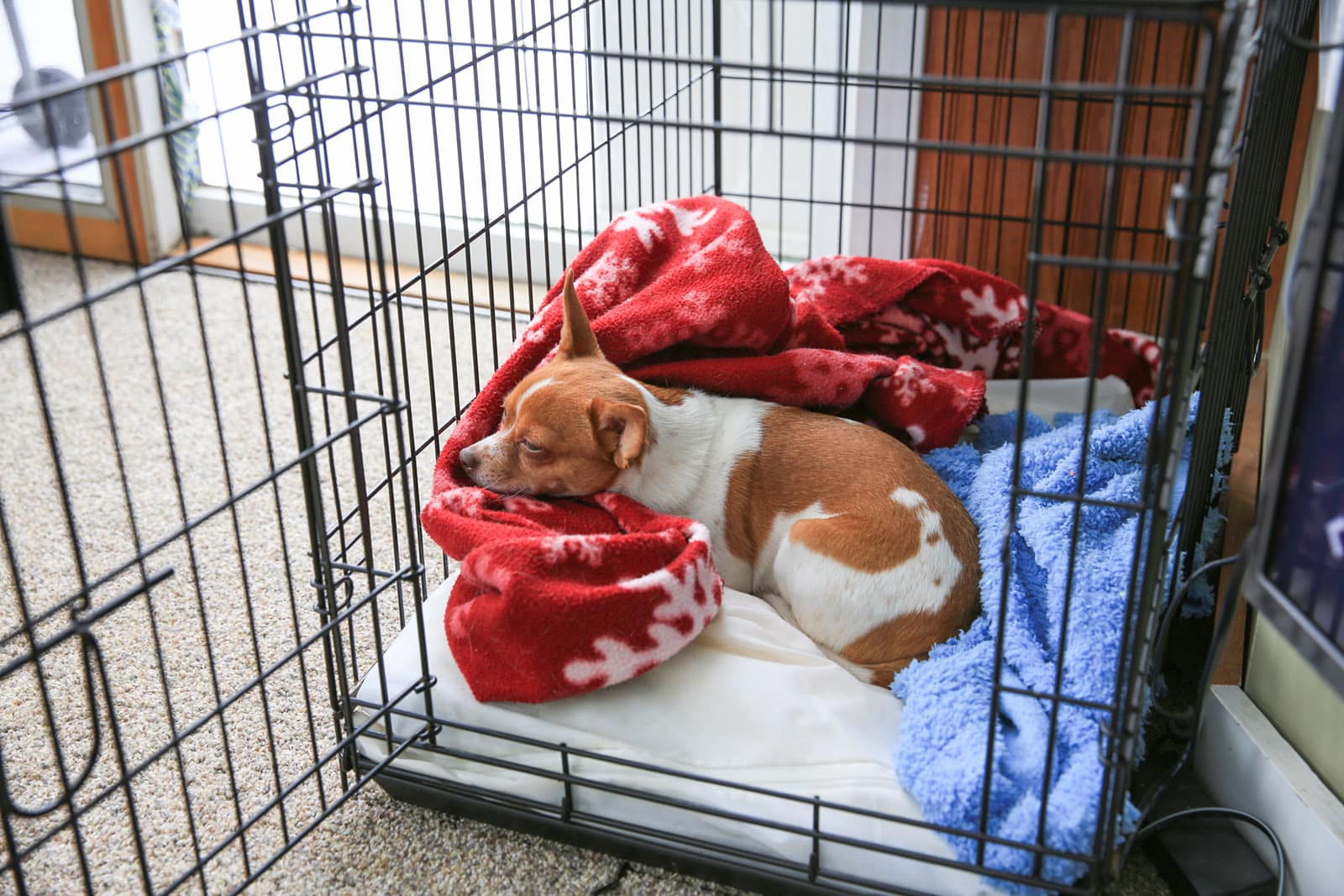
To ensure the success of crate training, it is important to monitor your dog's progress and behavior. Observing your dog's reactions and behavior inside the crate will help you gauge their comfort level and adjust accordingly. Take note of any signs of stress or anxiety, such as excessive panting, whining, or pacing. Pay attention to how long your dog can comfortably stay in the crate without showing signs of distress.
Additionally, monitor your dog's progress in terms of gradually increasing the duration they spend in the crate. Slowly extend the time they spend inside to ensure they can handle longer periods without feeling anxious or restless.
By closely monitoring your dog's progress and behavior, you can make necessary adjustments and provide them with a safe and comfortable space for relaxation and downtime.
Increasing crate time and freedom gradually

To increase crate time and freedom gradually, it's important to monitor your dog's progress and behavior. Start by gradually extending the amount of time your dog spends in the crate. Begin with short intervals and gradually increase the duration over time. This will help your dog adjust and become comfortable with longer periods of confinement.
Once your dog is able to stay in the crate for extended periods without distress, you can start giving them more freedom within a designated area while still being supervised. This allows them to explore their surroundings while ensuring their safety. Gradually increase the amount of unsupervised crate time until your dog can comfortably spend longer periods alone without any issues.
Remember, patience and consistency are key during this process. By gradually increasing crate time and freedom, you can help your dog develop a positive association with their crate and create a safe space where they feel secure.
Maintaining a Positive Crate Experience

To ensure a positive crate experience for your dog, it's important to continue reinforcing their positive association with the crate. Here are some tips to help you maintain a good crate experience:
- Use the crate for enjoyable activities: Incorporate the crate into your dog's routine by using it during feeding times or giving them a special chew toy or treat when they enter the crate.
- Avoid using the crate as a punishment: Never use the crate as a disciplinary tool, as this can lead to negative associations and anxiety.
- Gradually increase freedom outside the crate: Once your dog is comfortable in the crate, begin allowing them supervised time outside of it, gradually increasing their freedom as they show positive behaviors.
- Keep the crate clean and comfortable: Regularly clean the crate and provide cozy bedding to ensure your dog feels safe and secure.
By consistently maintaining a positive association with the crate, you can build trust and create a calm and comfortable space for your furry friend. Remember that alternative options like playpens or designated areas can also be utilized to give your dog freedom while keeping them safe.
Creating a positive association with the crate for long-term success

To ensure long-term success with crate training, it is crucial to create a positive association with the crate for your dog. This will help them view it as a safe and comfortable space rather than a confinement. One way to achieve this is by making the crate a place of positive experiences.
Start by gradually introducing treats and rewards when your dog goes into the crate voluntarily or when they display calm behavior inside. Rewarding them with praise and their favorite toys will reinforce their positive association with the crate.
Additionally, you can feed your dog their meals inside the crate, further establishing it as a positive environment. By consistently providing them with positive experiences within the confines of the crate, your dog will begin to view it as their safe haven.
Remember to never use the crate as a form of punishment as this can create negative associations. Instead, focus on making the crate a source of comfort and security for your furry friend.
Alternatives to crate training: playpens and designated areas

Playpens and designated areas can serve as alternatives to crate training for dog owners who prefer a more open and flexible approach. Playpens provide a safe and secure space for dogs to play and relax without the confinement of a crate. They are typically made of durable materials, such as metal or plastic, and come in various sizes to accommodate different breeds. Designated areas within the home can also be created by using baby gates or cordoning off certain rooms where the dog can roam freely. These alternatives allow dogs to have some freedom of movement while still ensuring their safety and preventing destructive behavior. It's important to gradually introduce these alternatives and provide appropriate supervision until the dog is comfortable and well-trained in these designated areas.




0 Comments